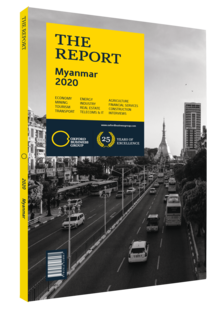Increased access to microfinance boosts inclusion in Myanmar
In a country where 70% of the population work in rural communities, and around a quarter of all citizens live below the poverty line, microfinance is one of the few available sources for personal and business funding. Myanmar’s microfinance institutions (MFIs) are thus a vital part of efforts to boost access to credit. Indicators of financial inclusion have historically been low in the country. According to the Making Access Possible (MAP) initiative of the UN Capital Development Fund (UNCDF), in 2014 only 6% of adults had more than one financial product, 30% used formal financial services and 5% had a bank account. As a result of reform and targeted efforts to boost inclusion, however, these figures have improved significantly. The 2018 MAP update found that 48% of adults used formal financial services that year, and the new Myanmar Financial Inclusion Roadmap’s goal is to reach 60% by 2023. MFIs will continue to play a major role in reaching these targets. Indeed, in the five years to 2019 the microfinance segment grew by 260%, according to a July 2019 statement from the UNCDF.
New Regulations
Microfinance is relatively new in Myanmar. The Microfinance Business Law was passed in 2011, allowing local MFIs to set up and compete with international MFIs already operating in the country under international NGO flags. The Myanmar Microfinance Association (MMFA) was then established in 2013 to advance the segment’s development and interests by bringing together all the MFIs operating in the country.
In 2016 the MMFA worked with the Financial Regulatory Department to produce a new set of directives, thus expanding the segment. Prior to this, MFIs had been required to have at least 50% of their loan book taken by rural customers. After that, they were allowed to work in both rural and urban areas freely. MFIs were also allowed to apply for deposit-taking licences, borrow from international and local financial institutions, and issue loans up to a new limit of MMK10m ($6520). In June 2019 the then-Ministry of Planning and Finance also issued a directive allowing MFIs to reduce their loans and compulsory savings interest rates from 30% to 28%. Furthermore, in December 2019 a new microfinance bill was submitted to Parliament for approval.
Segment Snapshot
According to MMFA data, there were 180 licensed MFIs operating in the country as of mid-2019, serving a total of 3.4m customers and with a total loan portfolio of MMK350bn ($228.2m). The MFIs broke down into three main groups: 18 MFIs with assets greater than MMK10bn ($6.5m), which accounted for 80% of total segment assets between them; 38 MFIs with assets ranging MMK1bn-MMK10bn ($652,000-$6.5m), which held 16% of total segment assets; and the remainder had assets less than MMK1bn each ($652,000), accounting for about 3-4% of total segment assets. The segment is therefore well populated and demand is high, but also top heavy. The top-18 MFIs by assets are also dominated by international MFIs. For instance, Pact Global Microfinance Fund disbursed 1.3m loans in Myanmar in 2018, worth a total of $408m, with high repayment rates of 99.4%.
Future Developments
Although the new regulations have allowed for the creation of deposit-taking MFIs, only six institutions have acquired these licences, according to the MMFA. Obstacles remain, such as the lack of credit histories for many borrowers and the absence of a functioning credit bureau. Other issues faced by MFIs include the difficulties with issuing new products and restraints on the amounts they can loan. Nevertheless, MFIs’ local expertise is also seen as invaluable for many larger financial intermediaries. Stakeholders hope a new, dedicated MFI law will address product diversity and pricing issues, along with loan amounts – although there is no known time frame for this. For the moment, the segment looks set to continue further expanding.
You have reached the limit of premium articles you can view for free.
Choose from the options below to purchase print or digital editions of our Reports. You can also purchase a website subscription giving you unlimited access to all of our Reports online for 12 months.
If you have already purchased this Report or have a website subscription, please login to continue.

